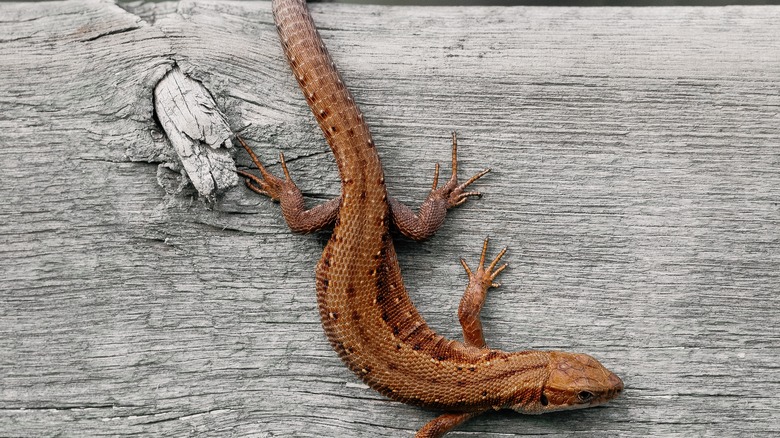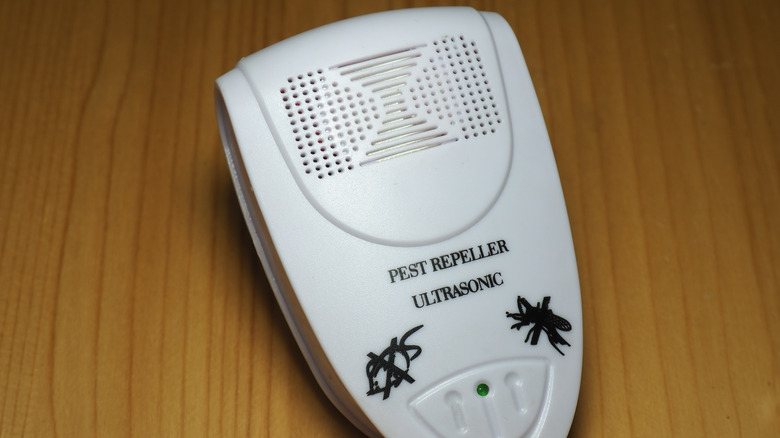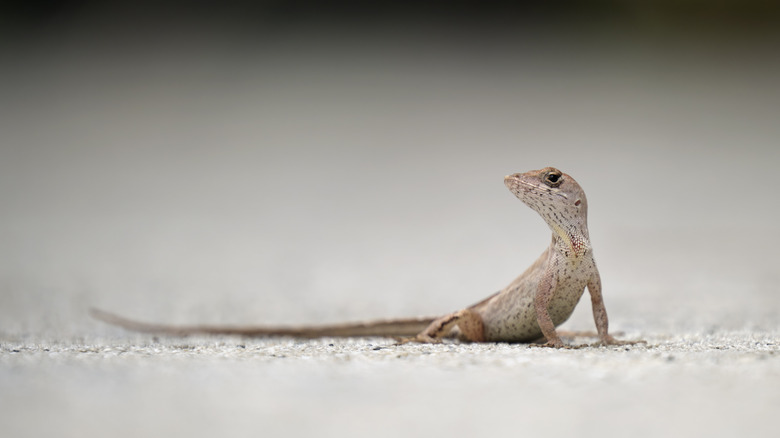You May Want To Reconsider Using This Pest Control Method To Keep Lizards Away
For many people, pest control is an ongoing battle, as some critters — such as lizards — work hard to find their way into every crack in a home. One strategy is to use an ultrasonic repellent designed to discourage lizards from coming toward your home, keeping them out of your yard and garden. While these devices seem to work, they have their limitations, with some people stating they only work for a short amount of time and others noting they keep too many animals away.
Ultrasonic pest control is an alternative to toxic chemical-based treatments that may not be ideal in and around homes. As pest repellents, they work by creating a very high-pitched sound, one on a frequency people cannot hear. It doesn't harm most pests, but it's irritating enough that it causes discomfort, causing the lizard to scamper away from it. The devices tend to be rather easy to set up, with a plug-and-play or battery-operated design. You can use them in a garden or even in your shed to help discourage pests from entering, but keep in mind this is only producing a sound.
Many pests react to new and strange noises by running and hiding from them, and lizards are no exception. You can see how they react with just a clap of your hands. While there are some benefits to using this pest control method, recognize there are also limitations that make them less effective than other natural lizard repellents.
How ultrasonic repellants are designed to work
An ultrasonic repeller is a mechanical device that produces a very high-frequency sound most people cannot hear but is so deafening to critters like lizards that they run from it. The sound doesn't harm their hearing, which is critical when choosing a non-harmful pest repellent since hearing is a critical defense mechanism for many animals. Most devices are not targeted to a specific pest sub-group, though, which means they will alert any animal with the ability to hear it. That's great, as it may help with everything from rats and mice to bed bugs.
Manufacturers of these devices share that the sound creates a blanket level of protection for your area. They have different frequencies that operate at various levels, some at a much further distance than others. Some turn on and off, creating an element of surprise when they turn on, causing the lizards and other pests to move on.
The frequency on these devices for lizard repelling is generally at 20 kHz or higher, though each system could be different. Once turned on, you can expect lizards to react, which means if you see one on your patio, it's likely to run for cover. These devices are more effective for creating a barrier away from your home. That is, they work best when lizards are not yet on your property. Once they hear the device, they'll choose to go elsewhere.
The problem with ultrasonic pest repellers
Typically, these products work at first, as anything that comes on suddenly and is a loud, annoying sound that lizards have not heard yet is likely to scare them away. The problem is that, like most other pests, once they learn that there is no correlation between these high-pitched sounds and their safety, lizards aren't likely to pay much attention to the device at all. In other words, the repellers work for a short period and then are nothing more than an annoyance.
Another concern is that they may cause pets some discomfort. Dogs can hear up to 40 kHz, and cats can hear up to 60 kHz, which means both animals will be able to hear these devices if they have a frequency under these levels. Those with a higher level may impact other pets in the home, including hamsters and guinea pigs, which can hear sounds up to 90 kHz. There's not enough information available to show they don't cause hearing damage to any animals, and that should give you a reason to pause.
You can get rid of lizards in other ways, such as keeping the property sealed off with few openings. You can also encourage birds to your yard with a bird feeder as another natural deterrent and alternative to getting rid of lizards near your home.


